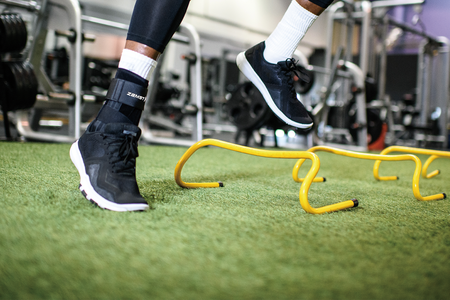Jumper’s knee (patellar tendinitis) commonly occurs in athletes who are involved in jumping sports such as basketball and volleyball, but can present itself in athletes from many sports. Patients report anterior knee pain, often with an aching quality or as symptoms worsen a more sharp pain. This pain is usually found just below the knee cap but can also be above in some cases (quadriceps tendon). It is an over use, or chronic injury, meaning its onset is usually gradual, occurring over time. Rarely is there any type of traumatic event involved that can be traced to the injury.
Depending on the duration of symptoms, jumper’s knee can be classified into 1 of 4 stages, as follows:
Stage 1 – Pain only after activity.
Stage 2 – Pain during and after activity.
Stage 3 – Prolonged pain during and after activity, athlete finds it difficult to perform activity.
Stage 4 – Complete tendon tear requiring surgery.
The injury is essentially micro tearing of the tendon that is occurring at a more rapid pace than the body can repair, causing pain and swelling in the area. As with most injuries in stages 1-3, the treatment for patellar tendinitis is R.I.C.E: rest, ice, compression, and elevation. Athletes combining these simple principles with a very conservative strengthening program (once the pain has decreased) will usually see positive results. ZAMST makes it easy to ice with the IW-1. Simply fill the bag with ice and apply for 20 minute intervals. Compression and support of the patellar tendon and surrounding structures can be accomplished by bracing with the JK-2, with its’ dual-layer pad and under strap. The brace not only applies pressure where it’s needed most, but also helps support the patella in general while providing a great fit and finish that won’t interfere with the athletes’ natural movement during activity. Continuing to ice and apply compression after a return to play can help to prevent re-injury.
Robbie Davis, CSCS, ATC, PES
GAMESHAPE, INC.
www.gameshapeinc.com






